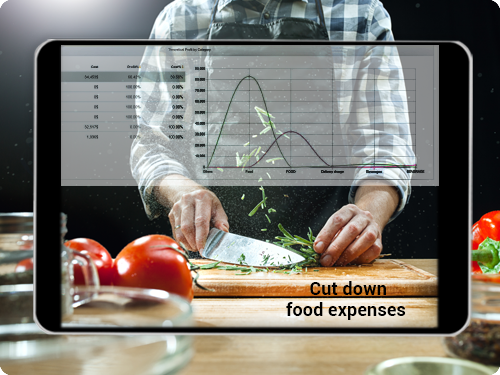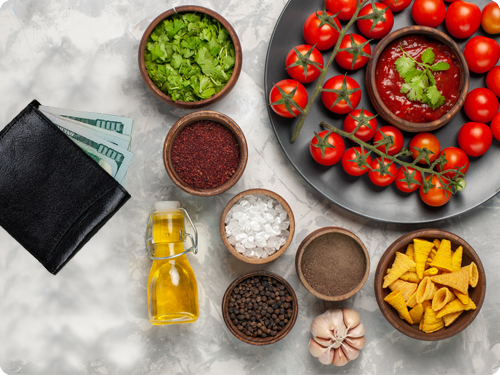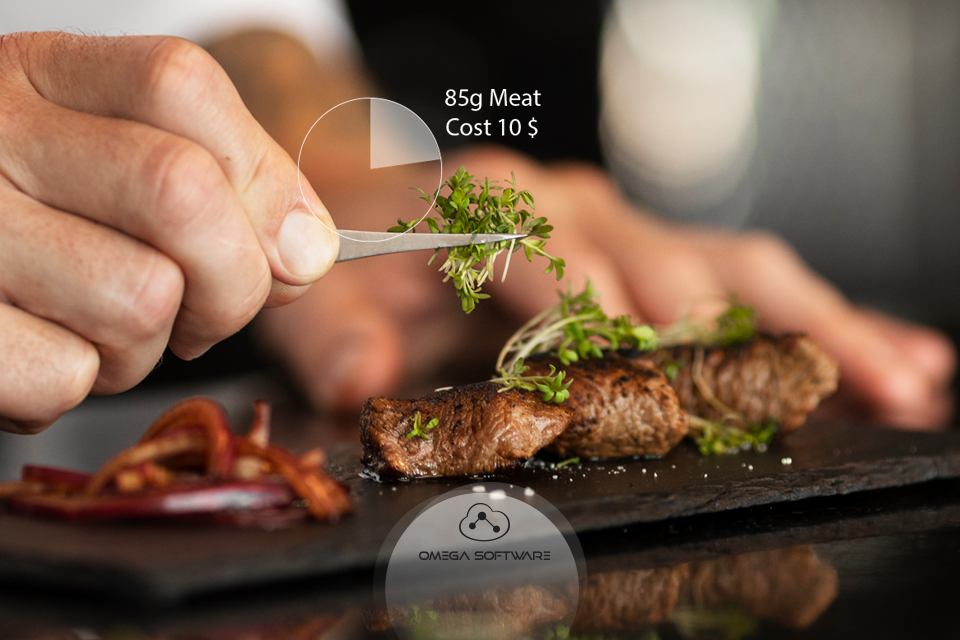As a restaurant manager or owner, you should always be on the lookout for and attentive to opportunities to reduce food expenditures. After all, every dollar counts when you’re trying to maximize profits.
Most restaurants’ inability to manage their finances effectively and profitably is due to their inability to control their food costs. If restaurant owners are unable to control their costs, the firm could suffer devastating losses and be forced to close.
Having a firm grasp of your restaurant’s costs will allow you to pinpoint problem areas and implement solutions that will help you maintain a sustainable profit margin.
The question then becomes, what strategies can a restaurant’s management employ to cut down on food expenses? In this article, we will discuss the many ways in which food costs can be reduced.
Strategies for Restaurant Cost Management that you can Adopt
No matter what type of eatery you manage, from fast food to gourmet dining, knowing how to minimize food costs is crucial. The following are some easy measures you may take to reduce your food bills.

- Keeping Tabs on Stock Levels and Purchases
One of the simplest methods to save money on groceries is to avoid purchasing surplus food and to keep track of stock-in, stock-out, and daily consumption. If you keep tabs on what supplies are most in demand, you may place orders with your provider for the right amount and at the right intervals. Therefore, it is crucial to conduct regular inventory practices.

- Cost-saving Credit-Based Raw Material Purchasing
One easy way to control restaurant spending is by using credit cards rather than cash. Cash purchases of raw materials are frequently made in smaller quantities and may be more expensive than bulk purchases. It is also suggested that an annual contract be established with the vendors. This would assist you in cutting thin suppliers’ pricing and maintaining raw material quality.
- Recognize Optimum Serving Sizes
Overproduction and excessive servings are inefficient practices that drive up food prices; therefore, getting the serving size correct when serving customers is essential. To guarantee that each meal is provided at the proper size, you must inform the entire staff about the intricacies of the portion sizes for the various dishes.
- Plan and Limit Wasteful Spending Wherever Possible
You can save hundreds or even thousands of dollars on food by being resourceful and avoiding waste. Request whole-skinned fruit from your vendors instead of the pre-peeled or chopped varieties. Get boned chicken instead of fillets and have your staff prepare it. You can reduce your food budget and increase your stockpile efficiency with a little bit of advance planning and preparation. For example, broth can be created from bones, negating the need to buy pre-packaged soup altogether.
- Make Menus more Logical and Streamlined
Engineering a menu entails proactively assessing its strengths and flaws to make the necessary adjustments. You can use this information to pinpoint your most successful meals and eliminate the ones that need to be bringing in more money or customers. By getting rid of these things or switching to fresh, less expensive fare, you can increase your earnings.

- Be Mindful of the Food Grades
Several countries evaluate food on freshness, quality, and presentation. Therefore, savvy eateries should ensure their purchasing department is well-versed in food grades and check if it’s required to buy just grade 1 things for each meal. Most grades only differ in appearance. For example, grade 2 tomatoes are slightly cheaper than grade 1 tomatoes, but they taste the same.
- Integrate Non-Used Goods Creatively in Specials
When you notice an item sitting in your storage area for a while, put it to good use: create a creative recipe and add it to the day’s specialties. Work with the front desk to promote the daily special. Ideally, you’d be able to reduce waste while increasing your bottom line.
- Keep Accurate Records to Monitor Restaurant Expenses
Maintaining regular records of your total restaurant business is another crucial recommendation that you must abide by. You should keep a close eye on sales, purchase reports and how well each menu item is doing while maintaining tight control access to up-to-the-minute data issue reports.
- Employ Restaurant POS Software
The price of food is a major overhead expenditure for any eating business. In restaurants, it can be difficult to keep food expenses down due to the high turnover of ingredients and the volatility of sales. For budgeting and calculating food prices, the old school restaurant operators consider using expletives and spreadsheets. Unfortunately, manual calculation wastes more time and energy.
Even worse, it passes on other possibilities to cut costs for your restaurant. So, why make additional work for yourself when you can use automated restaurant POS software that is made to make your life easier? The POS system’s inventory control features can safeguard a restaurant’s assets. This preventative measure makes it simple to keep track of how much of each ingredient you have on hand, and it safeguards you against buying too much of one item and having to throw it away when it doesn’t sell.
Fortunately, Omega POS is an ideal system that can lower food expenses and optimize a restaurant’s revenue. Let’s learn more about it!
Statistics to Persuade you to Upgrade POS System for a Restaurant:
According to a survey of over 300 restaurant managers, 21% manage manually. While 71% of restaurants utilize POS systems, and over 40% tout their benefits. When asked what features they valued most in a POS upgrade, better inventory management was cited by 20% off respondents. Surprisingly, 73% of food business respondents planned to improve technology before the end of the year.
Conclusion

Installing a POS system is the quickest and easiest approach to enhancing restaurant efficiency. Using a restaurant POS system can improve the efficiency and profitability of a business, allowing it to expand into new markets and attract more customers.
It’s time to upgrade your eatery!

